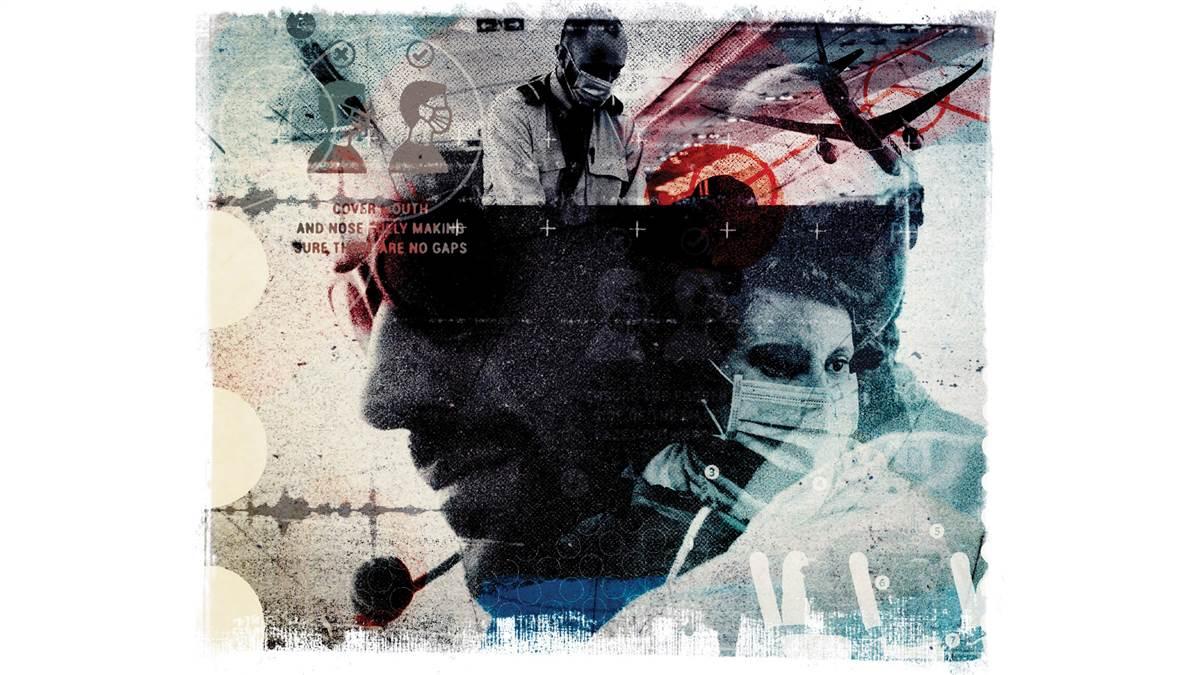Pax behaving badly
Why didn’t I choose to fly boxes?

These can be as simple as handling a minor medical incident, or it can escalate to a full-blown aerial melee with injuries to other passengers and/or crew requiring an in-flight diversion. During the depths of the COVID-19 pandemic, mask policies and social-distancing guidelines brought out some of society’s worst behavior. While I never had any incidents that would have been evening-newsworthy, there were a couple of incidents on my airplane that were tense.
On one flight, not long after the federal government mandated mask use, I got a call from a flight attendant regarding a passenger who refused to wear his mask. Passengers around the unmasked person were complaining and felt uncomfortable. The key, however, was that the unmasked passenger was a teen with Down syndrome. He was traveling with his parents who were unable to convince their son to keep the mask on.
During this time, mask noncompliance was a common issue. It seemed like I was making my “mask-compliance PA” a half-dozen times during a four-day trip. While it sounded like the proverbial “don’t-make-me-turn-this-car-around” lecture from Dad, it often helped defuse the situation. In this case, however, it did not. Those who felt uncomfortable were still not satisfied, and the more the parents of the teen tried, the more belligerent he became, leading him to yell and further aggravate the potential spread of the virus.
I talked it over with my crew and warned them that the only place this would lead to was a diversion to have the passenger removed. While the flight attendants and I were seriously considering this option, my first officer came to the realization that if we diverted and removed a disabled passenger—possibly by force—we could very well be the subject of a national news story, including all the drama and misinformation that comes with it.
 We talked it over with our dispatcher, too, who provided suggestions of where to divert to minimize the inconvenience to our passengers. In the meantime, flight attendants began telling the complaining passengers that we were considering diverting to unload the family. The complainers suddenly stopped complaining when the threat of a diversion was floated. And once the flight attendants relented the mask warnings, the unmasked teen relaxed and fell asleep. We all elected to continue to the destination and have a company representative meet the family on arrival. Sorry, news reporters—no story.
We talked it over with our dispatcher, too, who provided suggestions of where to divert to minimize the inconvenience to our passengers. In the meantime, flight attendants began telling the complaining passengers that we were considering diverting to unload the family. The complainers suddenly stopped complaining when the threat of a diversion was floated. And once the flight attendants relented the mask warnings, the unmasked teen relaxed and fell asleep. We all elected to continue to the destination and have a company representative meet the family on arrival. Sorry, news reporters—no story.
In the past decade or so, airlines have been trying to keep pilots from getting involved in cabin drama. If a captain gets involved in a heated argument or altercation prior to flight, it can have serious safety implications. Tempers get hot, inappropriate things can be said, or worse—things might even get physical. What happens when the pilot returns to the cockpit? He or she will likely be very distracted from the job, possibly replaying the whole event over and over in their head or engaging their first officer in a discussion completely unrelated to the job. Not good.
For this reason, airlines began using complaint resolution staff to deal with problem passengers and keep crewmembers, especially pilots, from getting involved. I think it’s a great idea, and for most cabin problems it works well. Sometimes, however, we pilots get dragged into the drama. This happened on a recent delayed flight when cascading issues led to a lengthy delay. One passenger came to vent her frustration in the forward galley just outside my open office door.
The passenger was obviously intoxicated and reportedly boarded the jet with a cup of wine. Somehow the gate agent missed it, but one of our flight attendants snatched the cup and warned her that outside alcohol is off-limits on board any U.S. airliner. To say she didn’t endear herself to our flight attendants was an understatement. And when she came to the front galley to confront our lead flight attendant while blocking the access of the cleaners we so desperately were waiting on, things got heated. When the passenger started loudly hurling profanity with abandon, I’d had enough and got out of my seat. I told her that language needed to stop and that if she didn’t sit down immediately, she was not going to Memphis.
Thankfully, she complied and sat down. The gate agent escorted her to her seat and followed up with his own written and verbal warnings. The lead flight attendant was a bit amped, and we discussed removing the passenger. Ultimately, we decided to let her stay on based on the report from the gate agent. Thankfully, the flight was a nonevent except for being two hours late.
I admonished myself for getting involved, but when it was happening right outside my door instead of in row 37, I felt compelled to act. When I returned to the cockpit, I forced myself not to dwell on the situation. Had it been more serious, that may not have been the case. FT


